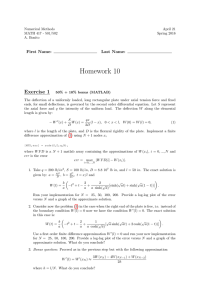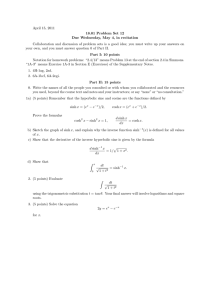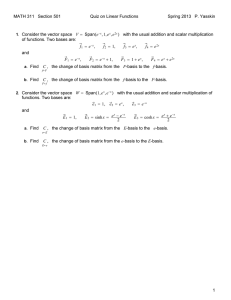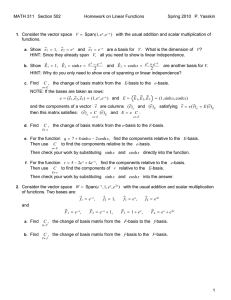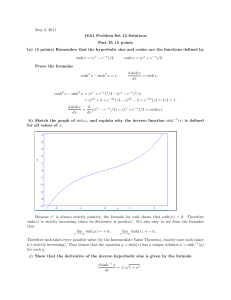Computer Assignment 1 Exercise 1
advertisement
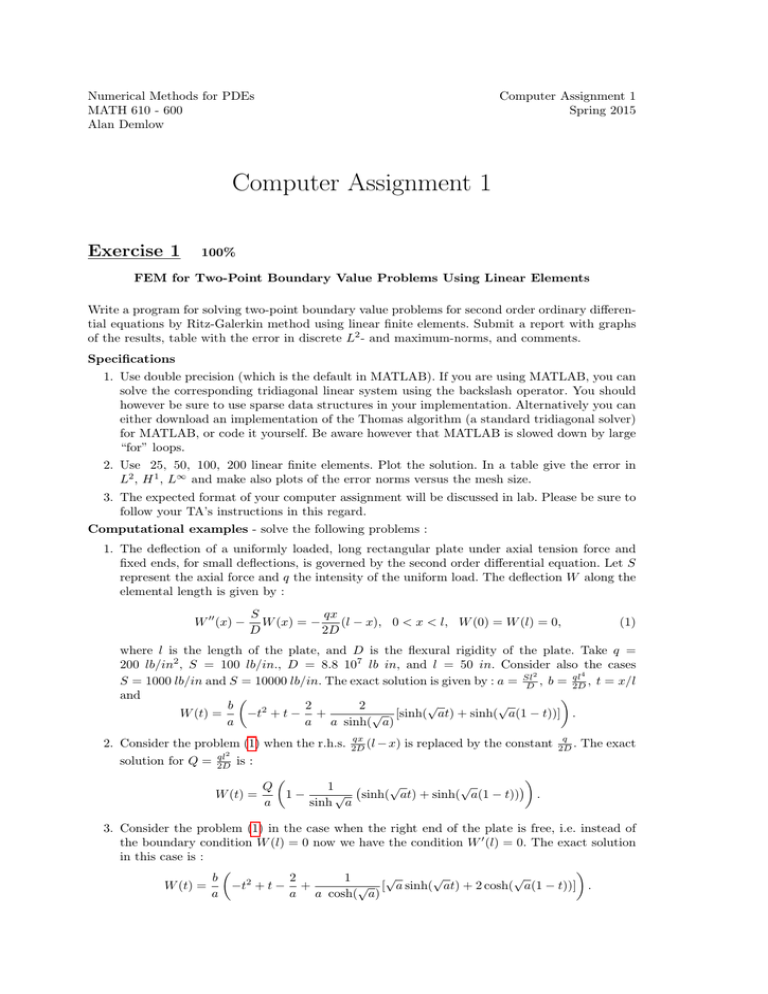
Numerical Methods for PDEs MATH 610 - 600 Alan Demlow Computer Assignment 1 Spring 2015 Computer Assignment 1 Exercise 1 100% FEM for Two-Point Boundary Value Problems Using Linear Elements Write a program for solving two-point boundary value problems for second order ordinary differential equations by Ritz-Galerkin method using linear finite elements. Submit a report with graphs of the results, table with the error in discrete L2 - and maximum-norms, and comments. Specifications 1. Use double precision (which is the default in MATLAB). If you are using MATLAB, you can solve the corresponding tridiagonal linear system using the backslash operator. You should however be sure to use sparse data structures in your implementation. Alternatively you can either download an implementation of the Thomas algorithm (a standard tridiagonal solver) for MATLAB, or code it yourself. Be aware however that MATLAB is slowed down by large “for” loops. 2. Use 25, 50, 100, 200 linear finite elements. Plot the solution. In a table give the error in L2 , H 1 , L∞ and make also plots of the error norms versus the mesh size. 3. The expected format of your computer assignment will be discussed in lab. Please be sure to follow your TA’s instructions in this regard. Computational examples - solve the following problems : 1. The deflection of a uniformly loaded, long rectangular plate under axial tension force and fixed ends, for small deflections, is governed by the second order differential equation. Let S represent the axial force and q the intensity of the uniform load. The deflection W along the elemental length is given by : W 00 (x) − S qx W (x) = − (l − x), 0 < x < l, W (0) = W (l) = 0, D 2D (1) where l is the length of the plate, and D is the flexural rigidity of the plate. Take q = 200 lb/in2 , S = 100 lb/in., D = 8.8 107 lb in, and l = 50 in. Consider also the cases 2 ql4 S = 1000 lb/in and S = 10000 lb/in. The exact solution is given by : a = Sl D , b = 2D , t = x/l and √ √ 2 2 b √ [sinh( at) + sinh( a(1 − t))] . −t2 + t − + W (t) = a a a sinh( a) 2. Consider the problem (1) when the r.h.s. solution for Q = ql2 2D qx 2D (l − x) is replaced by the constant q 2D . The exact is : W (t) = Q a 1− √ √ 1 √ sinh( at) + sinh( a(1 − t)) . sinh a 3. Consider the problem (1) in the case when the right end of the plate is free, i.e. instead of the boundary condition W (l) = 0 now we have the condition W 0 (l) = 0. The exact solution in this case is : √ √ √ b 2 1 2 √ [ a sinh( at) + 2 cosh( a(1 − t))] . W (t) = −t + t − + a a a cosh( a) If the r.h.s. qx 2D (l−x) is replaced by the constant W (t) = Q a 1+ q 2D then the exact solution is (with Q = ql2 2D ) : √ √ √ sinh a √ sinh( at) − cosh( at) . cosh a 4. A thin rod made of three different materials with insulated lateral surface has ends kept at temperature 0 and π4 + 32 degrees respectively. The steady state distribution of the temperature u(x) is a solution to the problem : −(ku0 )0 = 0, x ∈ (0, 1), u(0) = 0, u(1) = π4 + 23 , where k(x) = 1 for x ∈ (0, π/6) ; k(x) = 2, for x ∈ (π/6, π/4), and k(x) = 3 for x ∈ (π/4, 1). The 6 4 3 exact solution u(x) is a piece-wise linear function defined as 12 π x, π x + 1, and π x + 2 in the corresponding intervals of definition of k(x).



